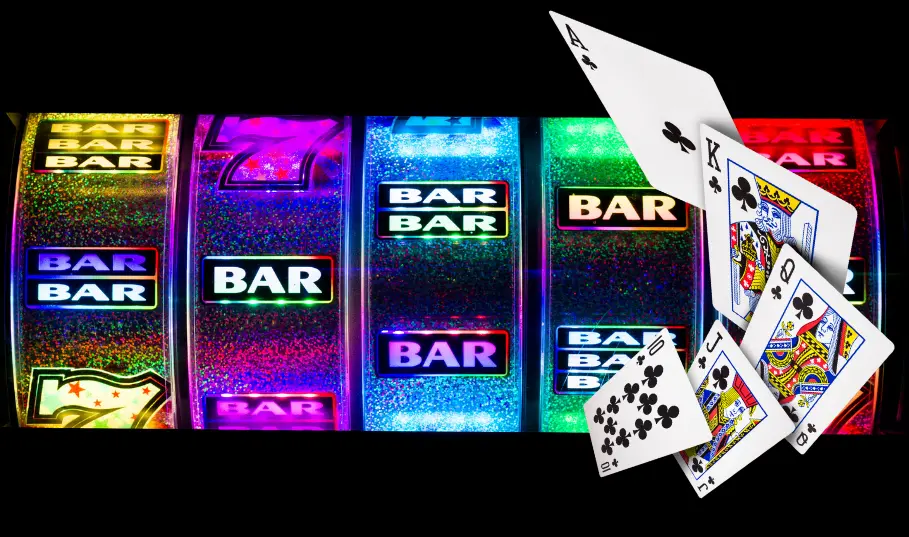Texas Holdem dealing requires you to have sound knowledge of the rules of the game. You will need to master concepts like dealing, burning, and shuffling, practicing them over and over until they come as naturally to you as breathing.
Becoming a good dealer could help you earn some cash dealing private games as a side gig, or it may even lead you to become a full-time poker dealer for cash games or tournaments yourself. Dealer wages and tips could be very generous, after all!
Regardless of what it is that you’re after, this article serves as a complete, all-in-one guide on Texas Hold em dealer rules and how to deal the game’s rounds. We’ll explore some of the most important concepts to understand as a dealer and break down the dealing process round by round.
Step-By-Step Guide on How to Deal Texas Holdem Cards
There are four key instances in which you’ll have to deal cards in a game of Texas Holdem poker. Remember: you always deal from right to left, as the dealing order should be consistent for the game to remain fair. If you new to poker and want to learn how to deal, we recommend getting familiar with the most common poker terms as well.
Texas Holdem poker is not the only format of gambling where dealing the cards is done in a specific manner. You can refer to this ultimate Texas Holdem guide if you need to learn about Ultimate Texas Holdem plays, card values, and other valuable information.
You will need to understand how to deal poker cards in the following facets of a game:
Shuffle & Deal
First things first: count the cards to ensure that there are 52, and shuffle the deck before you begin. You can do this manually, or you can do it with a shuffler. The latter is recommended if you’re new, and you’re dealing cards for eager players. However, if you wish to shuffle manually, these steps will help you respect poker etiquette:
- Pick up the deck and scramble all the cards on the table
- Organize all cards back at random, forming the deck once again
- Divide into two stacks and shuffle them.
- Repeat steps 2 and 3 a few times
- Cut the deck in half, and put the “lower” stack on top of the “upper” stack.
While the dealer shuffles, players should place all blinds and antes, the only types of bets that must be placed before cards are dealt, according to poker dealing rules.
Dealing Preflop
Collect the ante bets, if applicable.
Once this is done, hold the deck while covering the bottom card and start by discarding the top card face-down. Discarding the top card this way is known as burning, and it’s done to make it harder for any less honest player to attempt cheating by tracking marked cards.
Once the top card is burnt, start dealing one face-down card to every player until every participant has two face-down cards. Cards are dealt clockwise, starting with who is sitting on the left side of whoever has the “Dealer” button.
The player who gets the first card should be whoever placed the small blind.
Once every player has two cards, the first round of betting begins. The player that places the Big Blind is the first one to act, while the one that has the “Dealer” button is the last. Remember to collect all bets and add them to the pot.

Dealing The Flop
Before the flop betting round occurs, start dealing the flop deal holding the deck and tapping the table with the same hand that has it. The first card is always burned (discarded, face down, into a pile). Once the first card is out, deal three face-up community cards. These cards should be spread in the center of the table, next to each other, in the same order they were drawn.
As per Texas Hold em dealer rules, these three cards create what is called the flop. Once they’re set, the second round of betting begins. The first player to the left of the player on the button who is still in the hand will act. If the Small Blind is still in the hand anymore, they’re the one to act first. Once the round is over, you should collect all bets and move them into the pot.
Dealing Turn and River
To begin the turn, tap the table with the deck and burn one additional card (the one atop the deck) and deal one extra community card alongside the other three. That’s the fourth street, and it leads to one more round of betting among players. As always, the Small Blind starts the betting round.
Once that’s done, collect all bets.
Tap the table again, with the deck in hand, and burn an additional card before placing the final community card on the table. The last betting round starts. If all players fold, bar one, then the remaining player is declared the winner. Otherwise, a showdown occurs.

The Showdown
If at least two players remain, a “Showdown” starts, where the player that acts closest to the Big Blind reveals their hand first, and the remaining player does so afterward. The winner is determined based on the hand value
values.
Key Situations when Dealing Texas Holdem
Let’s take a look at some must-know facts that you should have a strong grasp on when partaking in Texas Holdem dealing:
- Dealing: Cards are always dealt clockwise. If a card is exposed while dealing, the croupier must show it to all players, burn it, and add a new one. The same applies to player cards that they accidentally show to other players. Cards that shouldn’t be seen are burned and replaced.
- Table Tapping: The dealer will usually tap the table when a round of betting ends, to let players know. It’s a sort of “marker” that has become traditional in games of Texas Hold’em throughout the world, and each dealer develops their own style of table tapping.
- Dealer Button: The dealer button moves clockwise around the table. Whichever player has the button will be the last player to make a move during the current round. The player on the left will place the small blind, and whoever is left of them will place the big blind. Since the game always moves clockwise, whoever has the “Dealer” button plays last.
What to do if a card is accidentally dealt face up?
If a card is accidentally dealt face up, you should do the following:
- The dealer should ensure that all players see that card by showing it to everyone at the table.
- Take the exposed card and place it in the burn pile.
- Continue dealing from the same deck.
- If a player accidentally turns up a card when viewing his or her hole cards, that exposed card must also go into the burn pile. The dealer then gives a new card to the player face-down.
- However, if more than one card becomes visible during the deal, the hand is automatically considered a misdeal. Players take back their bets, and the dealer must start over with a new shuffle. Players must then post blinds (and antes, if applicable) to start a new hand.
Where does the dealer button start?
At the start of a completely new poker game, the dealer usually shuffles a deck of cards and give one face-up card to each player, starting with the player to the dealer’s left and proceeding in a clockwise direction. The player with the highest card receives the dealer button to initiate the action in a game of Texas Hold’em. Sometimes players can agree that the dealer button should start with the player directly to the left of the dealer.
How many cards do you deal for Texas Hold’em?
For Texas Hold’em poker, you deal two cards to every player. These are known as hole cards. The cards are for the eyes of the player only, and they should be kept face-down at all times. When dealing, you should give one card to each player at a time in a clockwise motion, ensuring that each player receives two hole cards by the end of the deal.
Do you deal clockwise or counter in poker?
In poker, cards are always dealt in a clockwise direction, starting with the player to the dealer’s left which is the Small Bland. This consistent dealing order ensures fairness and helps avoid accusations of cheating. Whether at local casinos and poker rooms or at home games, the standard practice is to deal the cards clockwise.
Texas Hold’em Dealing: Easy to Do, Difficult to Master
You should now know all the basics of Holdem dealing. All that’s left is for you to practice until you’re comfortable enough to do it in any type of casino or gambling environment.
Nowadays, players can log into any reliable and licensed online casino and play the game with real money or fake currency. The latter, combined with a good guide of poker basics, is great to develop a stronger understanding of poker dealing rules before playing with real money or with physical cards!









